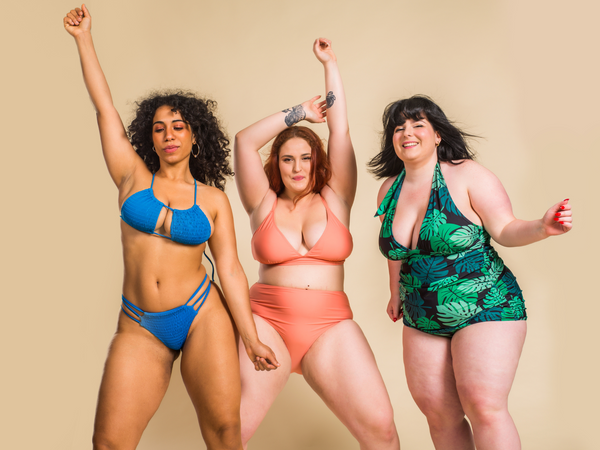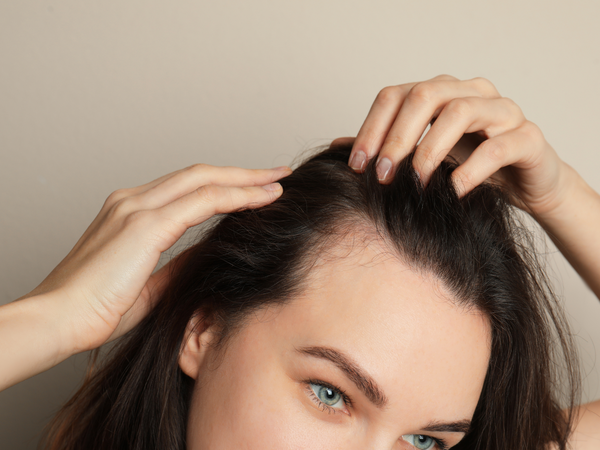What is Henna made of?

We’ve been using Henna as a beautiful, natural alternative to PPD laden mainstream colours for years, but we know if you’re new to it, you may want to know what it’s made of and how it works.
Henna refers to the leaves of the shrub Lawsonia inermis. It’s often also called the Henna Tree, or Egyptian Privet, or Red Henna.
The leaves are dried and crushed into a green coloured powder, which when mixed with water or other liquids adds a vibrant, orange-red or auburn colour to skin and hair. The end colour result takes up to three days to develop as the hair will darken with oxidation. So it can look very bright at first but settles back over a few days.
Your colour result will also depend on your original colour, the porosity of your hair, and what you mix the colour with. Unlike traditional colours, Henna can be mixed with other natural ingredients which work together to support the hair’s natural function, instead of stripping it. Tea, Lemon Juice, Yoghurt and Olive Oil can all be used and will vary the result – as a rule the more acidic the mix, the darker the end result.
Pure Henna powder doesn’t contain damaging additives such as parabens, ammonia, alcohol, peroxide, fragrance, and more, which makes it an ideal option for those with sensitive scalps or skin concerns and those who want to use a less environmentally damaging option for their hair.
Alongside the beautiful colour that Henna gives, it also offers other benefits for those with scalp issues, as it contains antifungal and antimicrobial properties. There is evidence that Henna can re-balance pH levels in addition to maintaining excess oil production by restoring the normal function of your sebaceous glands.
Cultural Significance:

Henna has been used to create intricate body art, often as part of the wedding process for thousands of years, and was originally recorded as a hair colour 9000 B.C, by Cleopatra in ancient Egypt. The pre-wedding or Mehndi celebration is still part of Hindu and Sikh culture today - brides the world over have henna parties where the decorative red-orange colouring is applied to their hands and feet.
Other Types of Henna:
The name "henna" is used in other skin and hair dyes, such as black henna and neutral henna, neither of which is derived from the Lawsonia Inermis henna plant.
Black Henna is often mistaken for natural Henna, but the two are not the same. Black Henna is often used in street markets for "non permanent" skin tattoos, and though it is called "henna" it is primarily made up of artificial chemicals. Often people confuse this with natural Red Henna or Neutral Henna - but it is completely different.
Black Henna uses Indigo (from the plant Indigofera tinctoria) to get its colour, but it is mixed with chemical preservatives, para-phenylenediamine (PPD), and potentially other additives which can cause allergic reactions. If left on for more than three days, Black Henna can burn and cause permanent scarring.
If you have used Black Henna, even once, there is every chance you may be at a far higher risk of reaction to commercial dyes and any hair colourant, so it’s extremely important to carry out a full patch test every time you dye your hair.
Note however, that Indigo in its purest form, such as the certified organic one we sell, which hasn’t been contaminated or mixed with artificial additives, can be used very safely to create darker hair colours. It’s Pure hair dyes contain a blend of pure certified organic henna and indigo along with other organic ayurvedic herbs to create beautiful, skin-friendly colours.
Neutral Henna is not henna at all but is in fact Cassia powder from the Cassia plant, sometimes called wild senna or mature tea tree. Cassia auriculata and cassia obovata are 2 different, largely interchangeable varieties of this botanical.
If Cassia powder is mixed with water, it will not add any colour to the hair at all and simply acts as a natural volumizing and conditioning agent.
If mixed with lemon juice and soaked overnight, it can add golden tones to light, white or blonde hair, hence it sometimes being called ‘blonde henna’.
It’s important to remember though, that it cannot lighten hair, so greys and lighter hairs will see a golden effect, whilst those with darker tones will see a reddish glint.
To find out more about using henna, have a look at our guide here. And to see some before and after pictures, take a look in our gallery here.
If you’re not sure about mixing your colour yourself, try our It’s Pure Herbal Hair Colours, made with organic Henna for a great auburn result.
References:
https://en.wikipedia.org/wiki/Henna
https://tribune.com.pk/story/741476/a-brief-history-of-henna
https://www.lofficielusa.com/beauty/henna-healthy-alternative-hair-dye



